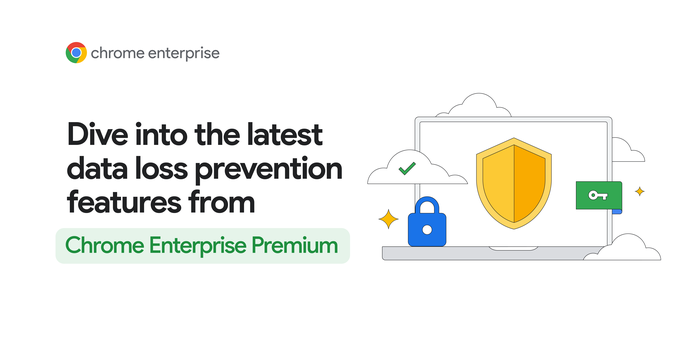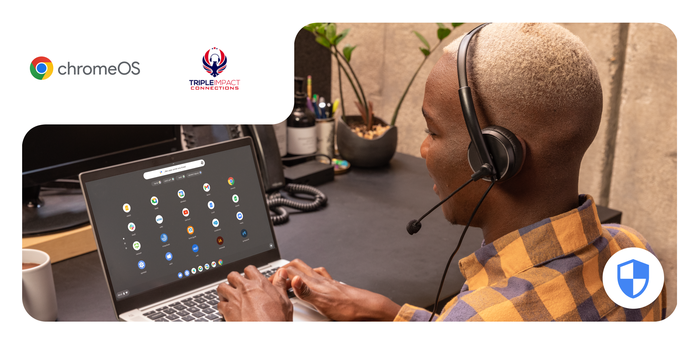American Senior Communities Provides More Efficient Patient Care with ChromeOS

Mike Easley
Chief Information Officer, American Senior Communities
American Senior Communities equips caregivers with ChromeOS, giving time back to care for residents
Editor’s note: Today’s post is by Mike Easley, CIO of American Senior Communities (ASC), which manages senior living communities throughout Indiana. ASC replaced Windows PCs with ChromeOS devices to give caregivers quick and easy access to maintain patient health records.
When you are improving technology for the care staff at more than 100 senior healthcare communities, you need a strategy and a plan. This is especially true when our managed communities do not have their own local IT teams. The corporate IT manages installation, compliance, security updates, and troubleshooting from a single office. That’s my job at American Senior Communities, along with my team of seven people. Fortunately, we were able to partner with ChromeOS to implement our strategy.
Shared devices become big-ticket items
Our caregiving staff, including certified nursing assistants and clinicians, spend most of their workday providing amazing care for our residents while tracking activities of daily living electronic health record data. Shared kiosk workstations are positioned all around our buildings and nursing stations, as well as Chromebooks on medication and treatment carts. Using our ChromeOS devices, caregivers can log in to our electronic health record (EHR) solutions to record resident data, medication, treatment administration, activities of daily living, and therapy documentation.
Prior to our ChromeOS implementation, our shared devices were Windows all-in-one kiosks, with laptops and desktop computers. Buying, maintaining, and securing these devices became increasingly expensive. Security and management software and support overhead added to the overall bill.
The cost of ownership for a Windows device over three years was as much as $4,000. As we began to look at ChromeOS devices, we saw that they’d be a fraction of the cost of comparable Windows computers. We estimate we’ve saved in excess of $4 million over the past few years
Mike Easley, Chief Information Officer, American Senior Communities
Dramatically reducing total cost of ownership
Many factors came into play when planning our strategy for device upgrades. Many of our devices ran Windows 7, and we were facing an end-of-support deadline for the operating system. Cost was an issue — but it did not make sense for us to continue to invest in security software and IT management while also upgrading or replacing the Windows devices.
The cost of ownership for one Windows device over three years was as much as $4,000. As we began to look at ChromeOS devices, we saw that they would be a fraction of the cost of comparable Windows computers. We estimate over $4 million has been saved over the past few years.
Additionally, using the ChromeOS Flex solution has helped us to extend the life of systems that were no longer able to run Windows — saving time and money while improving sustainability by gaining more years of life for those devices.
Our 2,200 ChromeOS devices — shared among around 4,000 users — update automatically in the background, which means the demands of upgrading software disappeared. IT team members no longer have to visit the communities in person to fix Windows or hardware problems. We can manage nearly every issue through the Google Admin console.
The way ChromeOS is architected strengthens our security, which is very important when most of our devices are shared. When Chromebooks and Chromeboxes in kiosk mode are shut down, they do not save the data that a previous user accessed. We do not have to add antivirus or other security software to the devices, which saves both time and money.
ChromeOS devices greatly reduced the complexity of managing our systems and reduced our help desk calls while keeping residents’ data safe. In just a week, we realized that adopting ChromeOS devices was a home run.
ChromeOS hits a home run for caregivers
No matter how much money we were saving, or how much we streamlined security and IT management, the move to ChromeOS would not mean much if caregivers and clinicians did not like using Chromebooks and Chromeboxes. They have easily adopted the new devices, and our clinicians did not slow down at all as we switched from Windows to ChromeOS.
We are now a Chrome-first organization: Our EHR and our day-to-day productivity solutions are all web-based. ChromeOS makes it fast and easy to get to apps, and ChromeOS devices boot up in seconds, compared to the several minutes it took to get a Windows computer up and running.
Our employees do not want to worry about troubleshooting technology — they simply want to provide quality care to patients and update healthcare records as efficiently as possible. When you are a busy caregiver with many residents depending on you, those minutes make all the difference.
No matter how much money we were saving, or how much we streamlined security and IT management, the move to ChromeOS would not mean much if caregivers and clinicians did not like using Chromebooks and Chromeboxes. They have easily adopted the new devices, and our clinicians did not slow down at all as we switched from Windows to ChromeOS.
Mike Easley, Chief Information Officer, American Senior Communities



